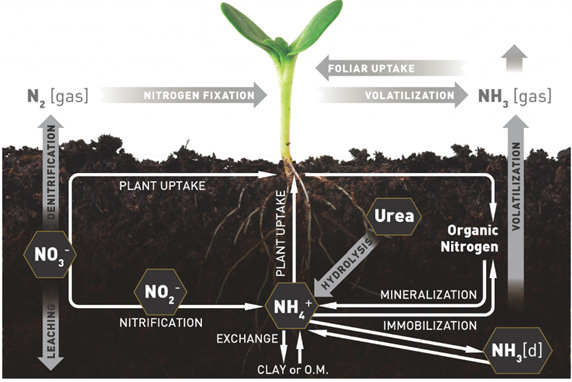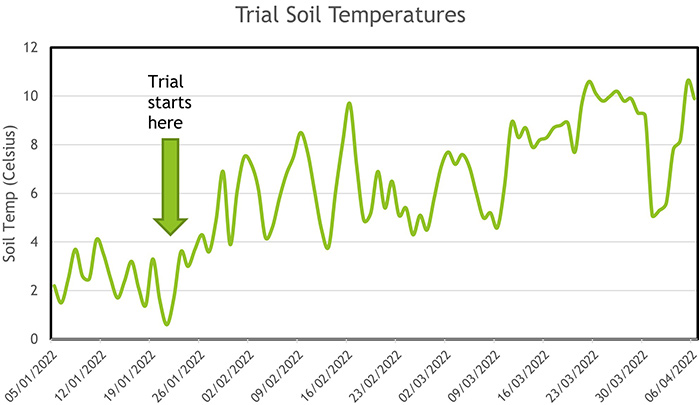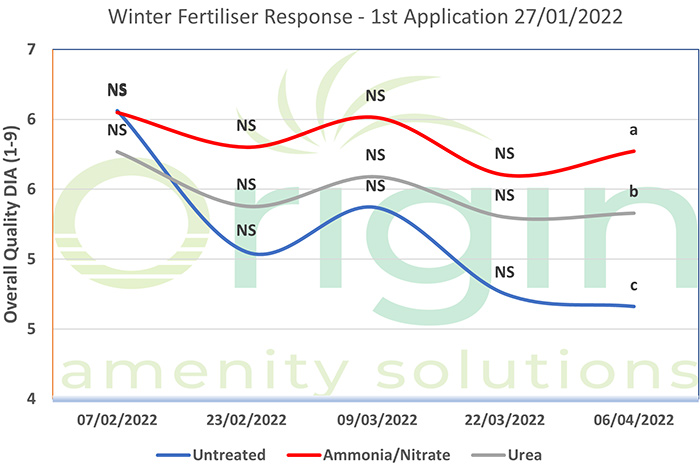How To Choose The Right Winter Fertiliser
By Kelly Clack and Geoff Fenn, Origin Amenity Research & Development Centre.
 Selecting the ideal fertiliser can be a tricky task, so make sure you understand what you are trying to achieve before applying the fertiliser. Collecting data such as clip rate can help you to make an informed decision about the rate of growth required to achieve your surface performance goals. It is also important to understand nitrogen sources and what we can expect to see when we apply the product.
Selecting the ideal fertiliser can be a tricky task, so make sure you understand what you are trying to achieve before applying the fertiliser. Collecting data such as clip rate can help you to make an informed decision about the rate of growth required to achieve your surface performance goals. It is also important to understand nitrogen sources and what we can expect to see when we apply the product.
Nitrogen is absorbed through the roots in solution form, as ammonium (NH4+) or nitrate (NO3-.) The nitrogen is classed as plant avalaible therefore applying a fertiliser containing these forms gives a relatively quick turf response.
If the ammonium is not taken up by the plant it can either sit in the cation exchange until it is required by the plant for growth, or it will go through the nitrification process. This is when ammonium is converted by nitrosomonas bacteria into nitrite (NO2-) and then nitrobacter converts this into nitrate. If nitrate is not taken up by the plant it will either leach or in anerobic conditions will enter the atmosphere as nitrous oxide (denitrification.)
Organic fertilisers and soil organic matter must go through a process called mineralisation. Soil microbes will breakdown the organic nitrogen into ammonium which is then avalaible to the plant to utilise for growth. Soil temperatures need to be above 5 degrees for mineralisation to take place. Likewise urea requires soil temperature for urease enzymes to convert the urea into ammonia (hydrolysis.) Ammonia is a gas that can volatalise but fortunately, hydrogen in the soil converts ammonia into ammonium for plant uptake. These nitrogen sources have to be changed before they can be used by the plant for growth. Therefore the turf response can take longer, depending on the soil temperature.

To summarise:
- Nitrate and ammonium sources of nitrogen are available instantly.
- Organic and Urea must be converted to be made plant available so consider the soil temperature.
Nitrate can leach and be lost to the atmosphere so thought should be given to the quantity applied at any one time. Most fertilisers will contain more than 1 source of nitrogen, so always check the breakdown to understand the turf response expected.
For rapid nitrogen uptake you can apply a foliar application of nitrate or ammonium. Be careful with urea as it may volatilise off the leaf.
A trial was conducted at Throws Technology Centre in early 2022 to look at the differences in turf response to different nitrogen source in cold weather. Two treatments were applied; one was a combined ammonium and nitrate source, and the other was straight urea:
|
Nitrate and Ammonium |
12-0-0 applied at 30l/ha giving 4.93kg/ha of nitrogen |
Fertiliser Application Dates: 27/01/2022 07/02/2022 23/02/2022 09/03/2022 |
|
Solubilised Urea |
46-0-0 applied at 10.72kg/ha giving 4.93kg/ha of nitrogen |
|
|
Control |
No treatment |
|
Clipping yield was measured over the course of the trial, plus digital images were taken using our lightbox and analysed for sward coverage, uniformity and density. An overall ‘turf quality’ score is given using the combined score for these metrics to give a completely objective quality score.
The trial began in January after a period of cold weather dropped soil temperatures below 5oC, but an unseasonably warm spell lifted these up into spring-like double figures:

This increase in soil warmth allowed the applied urea to be converted into available nitrogen at a much faster rate than we had expected. It was difficult to see differences in clipping yield – even untreated plots responded to the warmth and exhibited good growth.
Visually we could see some plots exhibiting a superior surface and our digital image analysis data backed this up:

Analysis of the images was carried out looking at overall turf quality; combining coverage, density and uniformity, and by the end of the trial period the ammonium/nitrate source showed statistically significant difference to both urea and untreated.
Actual images from the lightbox below show the sward was denser and a darker green. Although differences in clip yield were minimal, we saw growth had been directed into density, rather than upright growth, giving us a denser, tighter sward by early April.

Final digital images from the trial on 6th April: Rapid Response plot on the left showing higher quality compared to Urea plot in the middle and untreated control on the right. Both Urea and Rapid Response plots received exactly the same level of nitrogen over the trial.
Select a granular or liquid fertiliser containing nitrate nitrogen or ammonium nitrogen in cool weather conditions to encourage growth, sward density and improved aesthetics.
For further information contact Origin Amenity Solutions on 0800 138 7222 or email This email address is being protected from spambots. You need JavaScript enabled to view it.
Click the article to enlarge it.











































